
Concept explainers
a.
Find a cubic model for the data.
a.
Answer to Problem 92E
Explanation of Solution
Given information:
The table shows the average prices
Use the regression feature of a graphing utility to find a cubic model for the data. Let
Calculation:
Consider the below table
Here
First enter the data in calculator
For this press the button
Enter years in
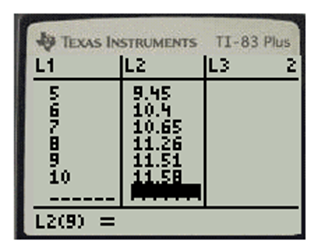
To find the cubic model use linear regression in calculator
Press the button
Hence, the cubic model is
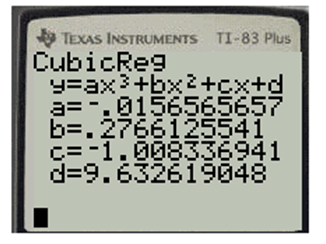
b.
Plot the data and the model in the same viewing window.
b.
Answer to Problem 92E
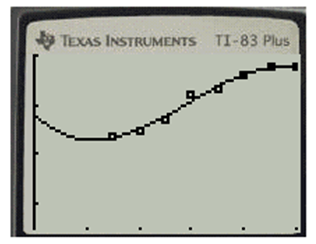
Explanation of Solution
Given information:
The table shows the average prices
Use the graphing utility to plot the data and the model in the same viewing window.
Calculation:
Consider the below table
Data and model are shown below
Here window settings are
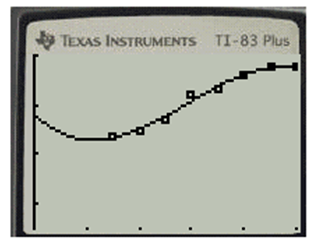
c.
Use binomial coefficients to write in
c.
Answer to Problem 92E
Explanation of Solution
Given information:
The table shows the average prices
You want to adjust the model so that
Calculation:
Consider the below table
Consider the model
Hence the required function is
d.
Plot the graph
d.
Answer to Problem 92E
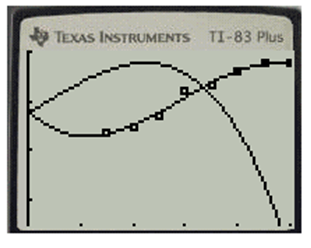
Explanation of Solution
Given information:
The table shows the average prices
Use the graphing utility to graph
Calculation:
Consider the below table
Consider the graph of
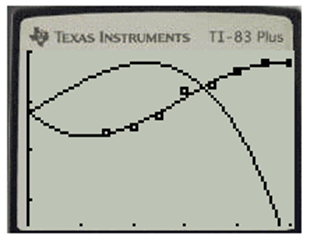
e.
Use both models to predict the average price in 2011.
e.
Answer to Problem 92E
Explanation of Solution
Given information:
The table shows the average prices
Use both models to predict the average price in 2011. Do you obtain the same answer?
Calculation:
Consider the below table
Evaluate
Hence average price in
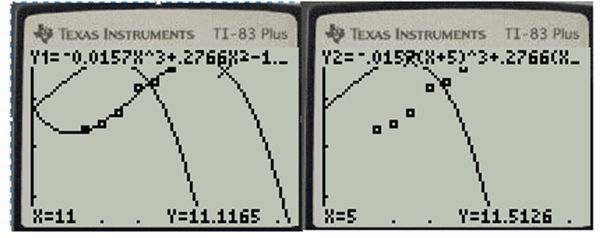
f.
Explain that part (e) is reasonable or not.
f.
Answer to Problem 92E
The answer is not reasonable.
Explanation of Solution
Given information:
The table shows the average prices
Do your answers to part (e) seem reasonable? Explain.
Calculation:
Consider the below table
Hence, the answer is not reasonable because prices are gradually increasing from the table but here it seems to be decreasing.
g.
Find the factor to change in the average price.
g.
Answer to Problem 92E
Time is the main factor that change the price.
Explanation of Solution
Given information:
The table shows the average prices
What factors do you think may have contributed to the change in the average price?
Calculation:
Consider the below table
Hence, the time is the main factor that change the price.
Chapter 9 Solutions
Precalculus with Limits
- 2\int_{-3/2}^{3/2} \sqrt{4u^2+2} duarrow_forward2. Consider the following: Prove that x, x2, and 1/x are the solutions to the homogeneous equation corresponding to x³y"" + x²y" + 2xy' + 2y = 2x4. b. use variation of parameters to find a particular solution and complete the general solution to the differential equation. I am interested in process. You may use a computer for integration, finding determinants and doing Kramer's.arrow_forward3. A spring is stretched 6 in. by a mass that weighs 8 lb. The mass is attached to a dashpot mechanism that has a damping constant of 0.25 lb-sec./ft. and is acted on by an external force of 4 cos 2t lb. a. Set-up the differential equation and initial value problem for the system. b. Write the function in phase-amplitude form. C. Determine the transient solution to the system. Show your work. d. Determine the steady state of this system. Show your work. e. Is the system underdamped, overdamped or critically damped? Explain what this means for the system.arrow_forward
- 4. Suppose that you have a circuit with a resistance of 20, inductance of 14 H and a capacitance of 11 F. An EMF with equation of E(t) = 6 cos 4t supplies a continuous charge 60 to the circuit. Suppose that the q(0)= 8 V and the q'(0)=7. Use this information to answer the following questions a. Find the function that models the charge of this circuit. b. Is the circuit underdamped, overdamped or critically damped?arrow_forward1. Solve the initial value problem: y" -11y' + 30y = x³e6x y(0) 11, y'(0) = 36 =arrow_forwardWhat is the particular solution to the differential equation y′′ + y = 1/cos t ?arrow_forward
- Which of the following is the general solution to y′′ + 4y = e^2t + 12 sin(2t) ?A. y(t) = c1 cos(2t) + c2 sin(2t) + 1/8 e^2t − 3t cos(2t)B. y(t) = c1e^2t + c2e^−2t + 1/4 te^2t − 3t cos(2t)C. y(t) = c1 + c2e^−4t + 1/12 te^2t − 3t cos(2t)D. y(t) = c1 cos(2t) + c2 sin(2t) + 1/8 e^2t + 3 sin(2t)E. None of the above. Please include all steps! Thank you!arrow_forwardShow that i cote +1 = cosec 20 tan 20+1 = sec² O २ cos² + sin 20 = 1 using pythagon's theoremarrow_forwardFind the general solution to the differential equationarrow_forward
- charity savings Budget for May travel food Peter earned $700 during May. The graph shows how the money was used. What fraction was clothes? O Search Submit clothes leisurearrow_forwardExercise 11.3 A slope field is given for the equation y' = 4y+4. (a) Sketch the particular solution that corresponds to y(0) = −2 (b) Find the constant solution (c) For what initial conditions y(0) is the solution increasing? (d) For what initial conditions y(0) is the solution decreasing? (e) Verify these results using only the differential equation y' = 4y+4.arrow_forwardAphids are discovered in a pear orchard. The Department of Agriculture has determined that the population of aphids t hours after the orchard has been sprayed is approximated by N(t)=1800−3tln(0.17t)+t where 0<t≤1000. Step 1 of 2: Find N(63). Round to the nearest whole number.arrow_forward
 Calculus: Early TranscendentalsCalculusISBN:9781285741550Author:James StewartPublisher:Cengage Learning
Calculus: Early TranscendentalsCalculusISBN:9781285741550Author:James StewartPublisher:Cengage Learning Thomas' Calculus (14th Edition)CalculusISBN:9780134438986Author:Joel R. Hass, Christopher E. Heil, Maurice D. WeirPublisher:PEARSON
Thomas' Calculus (14th Edition)CalculusISBN:9780134438986Author:Joel R. Hass, Christopher E. Heil, Maurice D. WeirPublisher:PEARSON Calculus: Early Transcendentals (3rd Edition)CalculusISBN:9780134763644Author:William L. Briggs, Lyle Cochran, Bernard Gillett, Eric SchulzPublisher:PEARSON
Calculus: Early Transcendentals (3rd Edition)CalculusISBN:9780134763644Author:William L. Briggs, Lyle Cochran, Bernard Gillett, Eric SchulzPublisher:PEARSON Calculus: Early TranscendentalsCalculusISBN:9781319050740Author:Jon Rogawski, Colin Adams, Robert FranzosaPublisher:W. H. Freeman
Calculus: Early TranscendentalsCalculusISBN:9781319050740Author:Jon Rogawski, Colin Adams, Robert FranzosaPublisher:W. H. Freeman
 Calculus: Early Transcendental FunctionsCalculusISBN:9781337552516Author:Ron Larson, Bruce H. EdwardsPublisher:Cengage Learning
Calculus: Early Transcendental FunctionsCalculusISBN:9781337552516Author:Ron Larson, Bruce H. EdwardsPublisher:Cengage Learning





